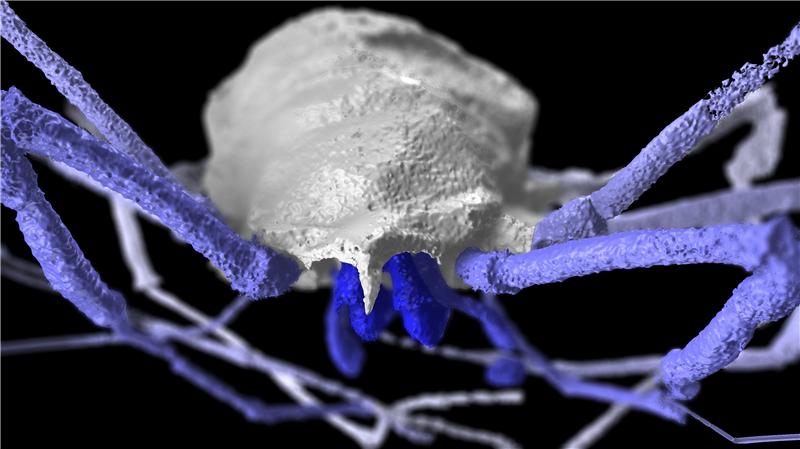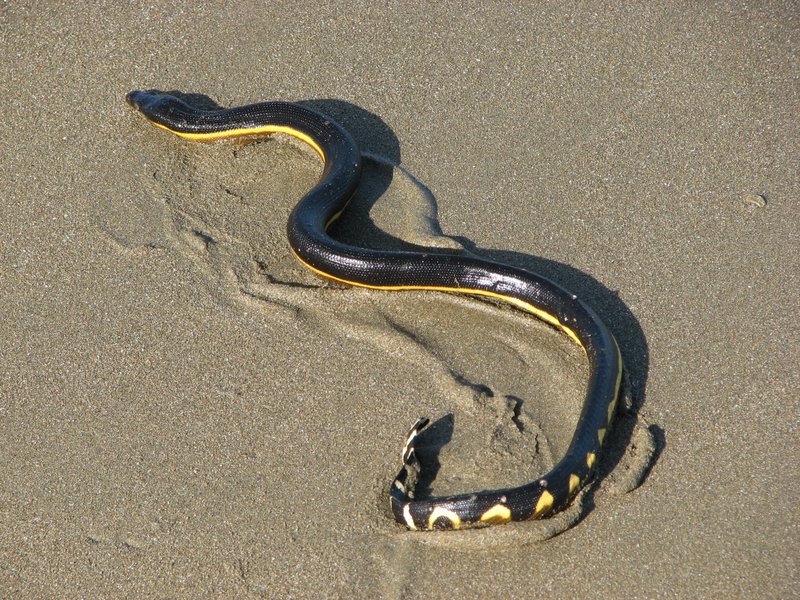A new study suggests that like humans, chimpanzees are also very particular about their bed. Chimpanzees unlike humans are known to create their bed every day starting from scratch just before their bedtime. The exclusive chimpanzees beds are called nests and it require bending, breaking stems of tree, and piling leaves in an interwoven pattern, on this structure. But researchers noticed that chimpanzees do not make their nest on any random tree, rather choose branches of Ugandan ironwood trees for the purpose. These trees provided them with sturdy and stable…
Read MoreCategory: Eco Tonics
10 Weird Facts about Spiders: The Creepy Crawlers
Spiders are famous for their architectural skill that is displayed by weaving of web. Majority in the species prefer solitary life, alone in their cobwebs. They look eerie no doubts but they show such unique and weird characteristics that researchers across the globe are still trying to figure out the reasons behind these awestruck potentialities that these arachnids exhibit. Some of them are described below: 1) Bulky DNA The DNA of one spider egg is equal to the amount of genetic material of four humans combined. 2) Immortals There is…
Read MoreFrogs Resort Competition via Cannibalism: The Voracious Predators
Cannibalism in the animal kingdom is very well known fact among the inhabitants. Animals whether big or small in their race for survival, resort to kill their competition by eating them. Animals like jungle king, lions are known to kill the offspring of the revival king to pave way for better future of its own offspring. But researchers say, the behavior of cannibalism can be also seen tiny wood frog tadpoles. These innocent looking tadpoles when hungry can eat other tadpoles present in the pool. Such behavior has also been…
Read MorePenis Discovered in Female Insect: Novel Structure in Evolution
While studying the Brazilian cave insects, researchers to their surprise discovered a penis like genitals in females and organ similar to a vagina in males. For the first time they have noticed, such an extreme switch of sex organs and have dubbed the newly revealed penis of the female insects as “gynosome” and “phallosome” for the vagina like organ in male insects.
Read MoreAncient ‘Spider’ Images Surface Secrets: Arachnids Evolution
Studying the 305 million years old harvestmen fossil images, researchers and archaeologists have discovered that the forefathers of existing arachnids had 2 pair of eyes and not just one.
Read MoreSightless Mechanism of Navigation: Mouth Suction by Cavefish
When it comes to visualizing environment, eyes play an important role. But there are other ways of navigation such as echolocation used by bats and dolphins. Recently, researchers studying Mexican blind cavefish (Astyanax fasciatus), have found a unique and new method of navigation. These fishes spend their entire life in the deep sea or dark caves, which are devoid of any source of light and so as the name suggests, their eyes are rendered useless and over the time the fish losses their eyeballs.
Read MoreTactile Stimulation and Reproduction go Hand in Hand Amongst Female Cockroaches
Generally, the antenna, key sensory organ of insects is known to aid insects in perceiving information about its surroundings such as availability of food, danger of predator, obstacles and potential mates and so on. They have many sensory receptors for audition, olfaction, balance, stability, gustation, graviception, thermo, hygro and mechanoreception, to name a few. They also play an important role during social interactions. In German cockroaches (Blattella germanica), during such social interaction, antennal contact alters juvenile hormone production which leads to an increase in female reproduction rate. In short the…
Read MoreSniffing Web Pheromones Helps Male St. Andrew’s Cross Spiders Determine Female Availability
Researchers from the University of Hamburg, Germany and Macquarie University in Australia, studying St. Andrew’s Cross spiders, have found that male spiders looking for suitable mates, smell the webs woven by females and determine the females are ready for mating. The researchers observed several specimens of the species and conducted numerous experiment in their laboratory and finally concluded that smelling the pheromones present on the female web, male spider make a decision whether to move closer to the female for mating or not.
Read MorePlants Uses Chemical Weapons and Employ Insect Armies to Defend Themselves
When we encounter a danger, the first thing that strikes in our mind is to run away and hide (though many of us might choose to give a fight). But the article is in the context of animals and plants. Animals when encounter any danger of being attacked, the first instinct is to escape from the danger is to run. Unfortunately, the plants cannot do that. Rather, plants in order to defend themselves from their predators have evolved various defense techniques such as chemical weapons and insect armies.
Read MoreDark Plumage helps in Flushing out Toxic Metals
Just like humans, animals living in urban areas are constantly prone to metal intoxication. In France, a team of researchers studying the level of metal intoxication in birds have found a strange relation between the color of the plumage and the level of metal toxin in the bird’s body. They observed that the birds with dark shade plumage were better at getting rid of metal toxin from their bloodstream.
Read MorePandas Have A Functional Sweet Taste Receptor
The popular known fact that bamboo is the only food that panda exclusively feeds on, is not true. Researchers from the Monell Center have found that the panda has also liking for sweet food. The research, based on panda behavior and molecular genetics reveals the presence of taste receptors and confirms that the panda has a strong liking for natural sweeteners as fructose and sucrose.
Read MoreGoat’s Intelligence Was Underestimated
When we talk about intelligence in the animal kingdom, animals like chimpanzees, dolphins or crows are the first one to come across our minds. But it’s time to get over them, because as per the latest research, common goats are way more intelligent than formerly believed.
Read MoreClimate Change Slowing The Deep Ocean Currents
We recently covered an article explaining the vital role of the oceans in the global carbon cycle and the process in which oceans accumulate, transport and convert carbon molecules. But according to a recent research carried by Irina Marinov and Raffaele Bernardello from University of Pennsylvania and colleagues from McGill University, says that climate change is slowing down the deep ocean currents and can adversely influence the climate in the future.
Read MoreFidelity Can Be Seen In Owl Monkeys: Genetic Monogamy
Infidelity is very general trait to be observed in the animal kingdom. Maternal and paternal genetic tests have revealed that even the species that were considered to be faithful in their relationship, were often not loyal to each other. Merely about 10 percent of the species follow monogamy and are truly faithful to each other. However, according to a latest research led by University of Pennsylvania revealed that Azara’s owl monkeys (Aotus azarae) are remarkably devoted and faithful to their mating partners.
Read MoreSea Serpents Can Remain Dehydrated for Months: Combating Climatic Changes
Sea snakes as the name suggest, spend their entire life in the ocean. Researchers have always been curious to know how do these snakes survive in seawater and what method did they employ to satisfy the quench for fresh water. According to a latest research, the sea snakes though surrounded by water, unfortunately, remains thirsty and dehydrated for months.
Read More














